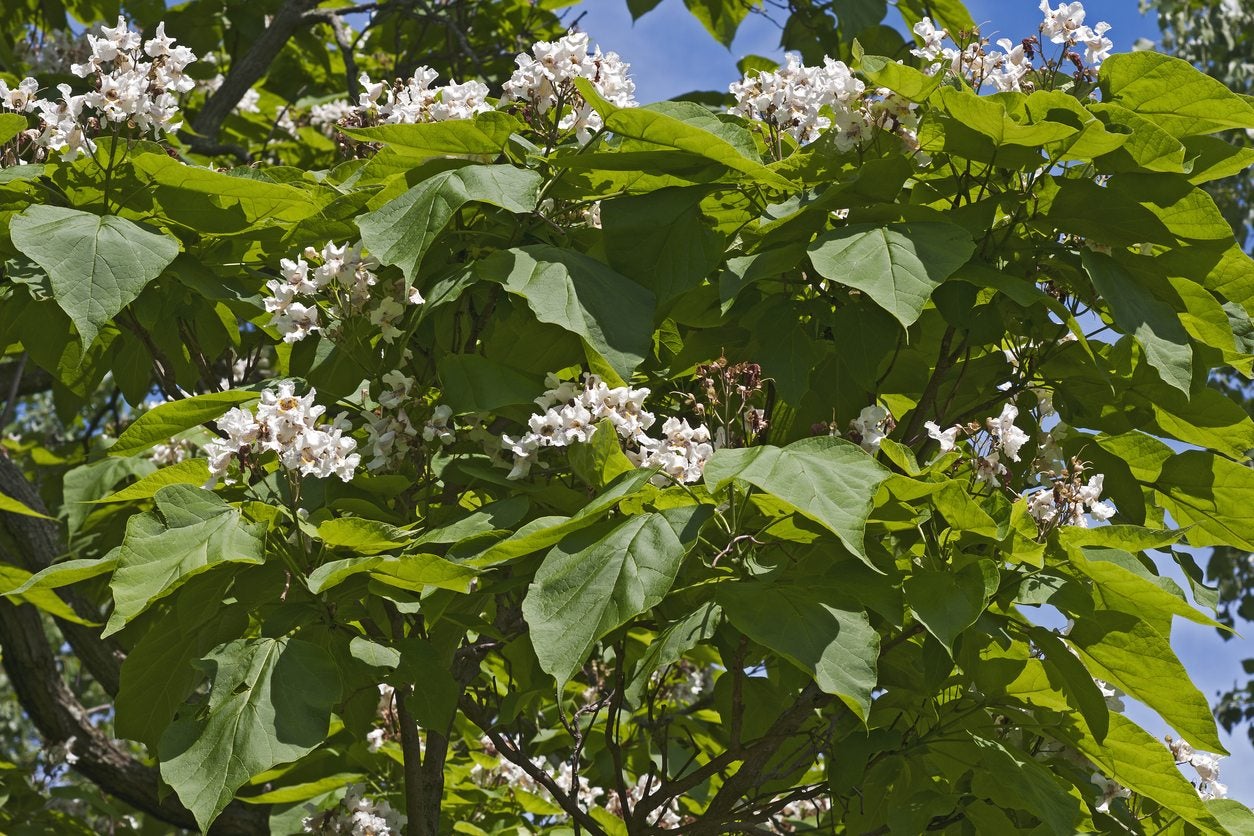Zone 6 Trees That Flower – What Flowering Trees Grow In Zone 6


Who doesn't love the snowflake-like fall of spring cherry petals or the cheery, blazing color of a tulip tree? Flowering trees liven up any space in the garden in a big way and many have the added benefit of producing edible fruit later on. Zone 6 trees flower abound, with many of the most popular blooming trees hardy in that region's possible -5 degrees F. (-21 C.). Let's take a look at some of the prettiest and hardiest flowering trees for zone 6.
What Flowering Trees Grow in Zone 6?
Choosing a tree for the landscape is a big decision, not only due to the size of a tree but because its architectural dimensions will often define that area of the garden. For this reason, picking the correct hardy flowering trees will ensure year after year of gorgeous flowers and a unique microclimate provided by the tree. As you look at your options, also bear in mind the site lighting, drainage, exposure, average moisture, and other cultural factors. Zone 6 is an interesting zone because it can easily get well below zero in winter, but the summers may be hot, long, and dry. Precipitation varies depending on what part of North America your region is located in, and other considerations need to be looked at when choosing flowering trees for zone 6. Also, determine what size of tree you want. There are plenty of dwarf fruit trees that can add color to the landscape without the nearly unmanageable height of some species of zone 6 trees that flower. Another thing to contemplate before purchase might be fruiting. Many trees do not produce edible fruits but simply yard debris. Ask yourself how much annual clean-up you are willing to do to keep things tidy.
Small Hardy Flowering Trees
There are many species of blooming trees perfect for a zone 6 landscape. Keeping the profile of a tree low helps with the maintenance and fruit harvest and prevents shading large areas of the garden. Dwarf fruit trees, like cherry and Prairie Fire crabapple, introduce seasonal color both with their flowers, fruits, and fall leaf change. A dwarf red buckeye will only get 20 feet (6 m.) tall on average and bring its carmine red flowers to decorate the yard from spring well into summer. The dwarf serviceberry-apple hybrid ‘Autumn Brilliance’ bears edible fruit and delicate white blooms at only 25 feet (8 m.) in height. A classic smaller tree, the Chinese dogwood has chubby, red, ornamental fruits and snowy flower-like bracts, while its cousin the Pagoda dogwood has architectural appeal with graceful, tiered branches. Additional trees to try might include:
- Fringe tree
- Ruby red horse chestnut
- PeeGee hydrangea
- Japanese tree lilac
- Cockspur hawthorn
- Star magnolia
- Showy mountain ash
- Witch hazel
Larger Zone 6 Flowering Trees
For maximum appeal when in bloom, taller species will be the focal point of the garden during their flowering. The larger varieties in the Cornus, or dogwood family, have elegant leaves and bracts in white to blush pink with fruits like Christmas tree ornaments. Tulip trees can become a 100 foot tall (30.5 m.) monster but are worth every inch with blooms of orange and greenish yellow in a form just like their bulb namesake. European mountain ash is more moderate in size at 40 feet (12 m.) and the flowers are not very significant, but the cheery, bright orange to red clusters of fruit persist well into winter and make it a standout for many seasons. Not much can compete with the regal saucer magnolia. The blowsy, old-fashioned, pinkish purple flowers are huge. You may also want to think about adding:
- Eastern redbud
- Acoma crepe myrtle (and many other crepe myrtle varieties)
- Amur chokecherry
- Aristocrat flowering pear
- Chaste tree
- Golden rain tree
- Ivory silk lilac tree
- Mimosa
- Northern catalpa
- White fringe tree
Gardening tips, videos, info and more delivered right to your inbox!
Sign up for the Gardening Know How newsletter today and receive a free copy of our e-book "How to Grow Delicious Tomatoes".

Bonnie Grant is a professional landscaper with a Certification in Urban Gardening. She has been gardening and writing for 15 years. A former professional chef, she has a passion for edible landscaping.